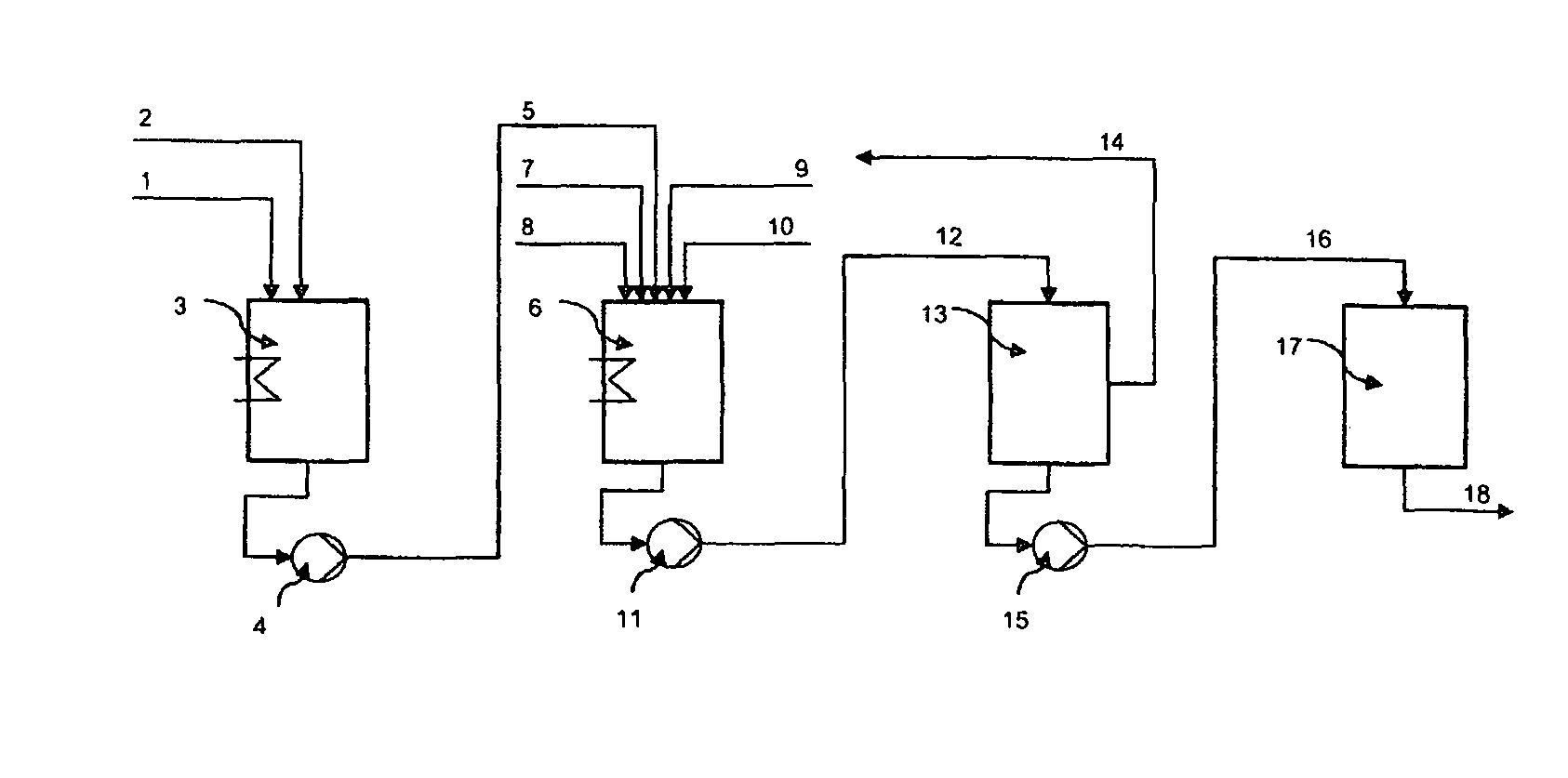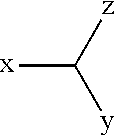Preparations containing hyperbranched polymers
a polymer and hyperbranched technology, applied in the direction of microcapsules, capsule delivery, mixing, etc., can solve the problems of dendrimers dendritic hyperbranched polyesters not serving to encapsulate substances, etc., to achieve high shear stability, simple and reliable manner, and high stability
- Summary
- Abstract
- Description
- Claims
- Application Information
AI Technical Summary
Benefits of technology
Problems solved by technology
Method used
Image
Examples
example 1
[0259]Using the system shown in FIG. 1, an inventive preparation which comprised DL-methionine and a hyperbranched polyester was prepared.
[0260]The hyperbranched polyester used was obtained (commercially from Perstorp® under the name Boltorn H30®) by hydrophobizing a hydrophilic hyperbranched polyester which had a weight-average molecular weight Mw of 3500 g / mol, a glass transition temperature of about 35° C. and a hydroxyl number of about 490 mg KOH / g. The hydrophobization was effected by esterifying the hydrophilic polymer with a mixture of eicosanoic acid and behenic acid (mass-based ratio of eicosanoic acid to behenic acid=2 to 3), and 90% of the hydroxyl groups of the hydrophilic polymer were converted. The molecular weight Mw was 10 500 g / mol. Further details of the preparation of the hydrophilic polymer and of the esterification can be taken from the documents EP-B1-0630389 or WO 93 / 01760.
[0261]To produce the preparation, 20% by weight of the amino acid DL-methionine (CAS: 59...
example 2
[0266]Example 1 was essentially repeated, except that a hyperbranched polyester was used which had been obtained by hydrophobizing Boltorn H30® with a mixture of stearic acid and palmitic acid (mass-based ratio of stearic acid to palmitic acid=2:1), and 50% of the hydroxyl groups of the hydrophilic polymer were converted. The molecular weight Mw was 7500 g / mol.
[0267]The resulting particles exhibited a particle size distribution of 150 μm90,particles<300 μm. The particles were free of undesired solvents and consisted of the hyperbranched fatty acid-modified polyester and approx. 16% by weight of DL-methionine based on the particle mass.
[0268]The storage stability, the shear stability and the enzymatic degradability of the resulting microparticles were investigated.
[0269]The storage stability was determined by storing the dry microparticles in a glass vessel, and the storage was effected at room temperature in an oxygenous atmosphere (air). After a storage time of 6 months, the methio...
example 3
[0272]Example 2 was essentially repeated, except that L-leucine (CAS: 61-90-5; commercially available from Degussa® AG; particle size d90 in the range from 1 μm to 10 μm) was used instead of DL-methionine. In this case, the polymer melt was prepared at a temperature of about 85° C. In addition, the Ultra-Turrax stirrer, in the transfer of the polymer melt into the second liquid phase, was operated at 3000 revolutions per minute.
[0273]The resulting particles exhibited a particle size distribution of 10 μm90,particles<50 μm. The particles were free of undesired solvents and consisted of the hyperbranched fatty acid-modified polyester and approx. 16% by weight of L-leucine based on the particle mass.
[0274]In the shear stability study, these microparticles likewise exhibited a high stability. A comparison of the microscope images of the active ingredient particles before and after the incorporation into the standard pharmaceutical oil showed that no change in the particle integrity can ...
PUM
| Property | Measurement | Unit |
|---|---|---|
| Temperature | aaaaa | aaaaa |
| Temperature | aaaaa | aaaaa |
| Temperature | aaaaa | aaaaa |
Abstract
Description
Claims
Application Information
 Login to View More
Login to View More - R&D
- Intellectual Property
- Life Sciences
- Materials
- Tech Scout
- Unparalleled Data Quality
- Higher Quality Content
- 60% Fewer Hallucinations
Browse by: Latest US Patents, China's latest patents, Technical Efficacy Thesaurus, Application Domain, Technology Topic, Popular Technical Reports.
© 2025 PatSnap. All rights reserved.Legal|Privacy policy|Modern Slavery Act Transparency Statement|Sitemap|About US| Contact US: help@patsnap.com


